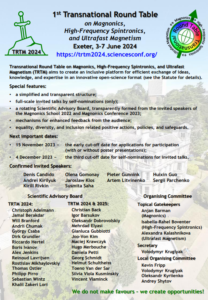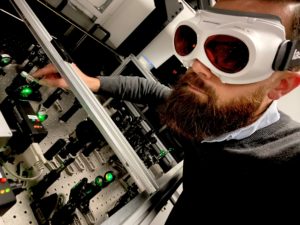On 22nd July 2020, the EXTREMAG Facility hosted its debut (virtual) User Meeting.
The GoToWebinar meeting was attended by more than 60 participants from around 25 institutions spanning 7 countries and 3 continents.
The Programme featured three invited talks from leading experts in magneto-optics and high frequency magnetism, and three contributed talks from recent users of the EXTREMAG Facility.
The organisers thank the speakers, session chairs, attendees, and our sponsor the EPSRC.
If you would like to follow up on any details of the EXTREMAG Facility or discuss possibilities for user time, please contact us using the details on the Contact Page.
We look forward to our next User Meeting!









